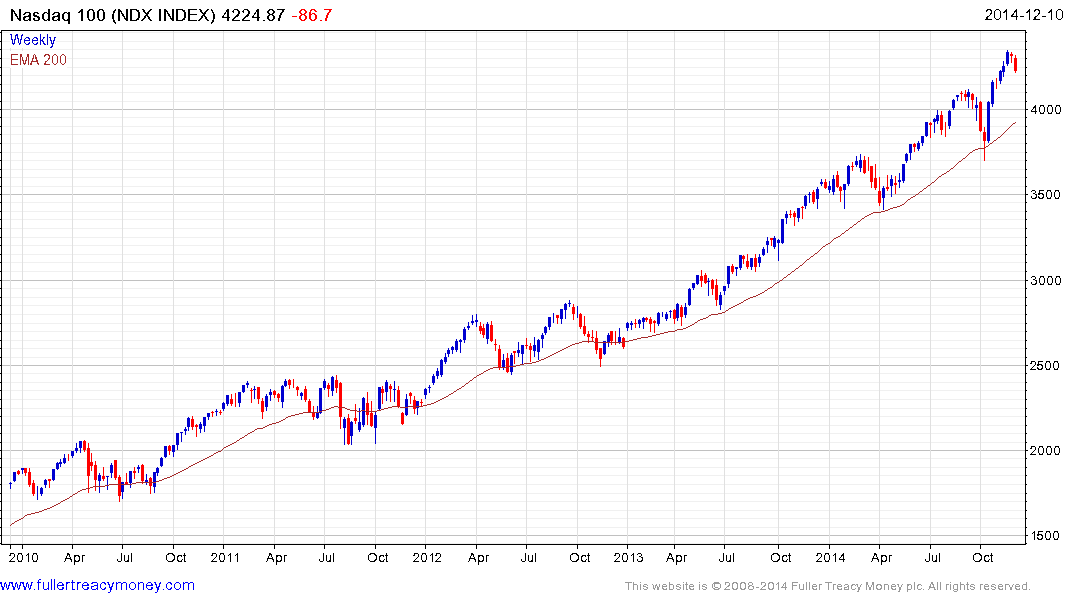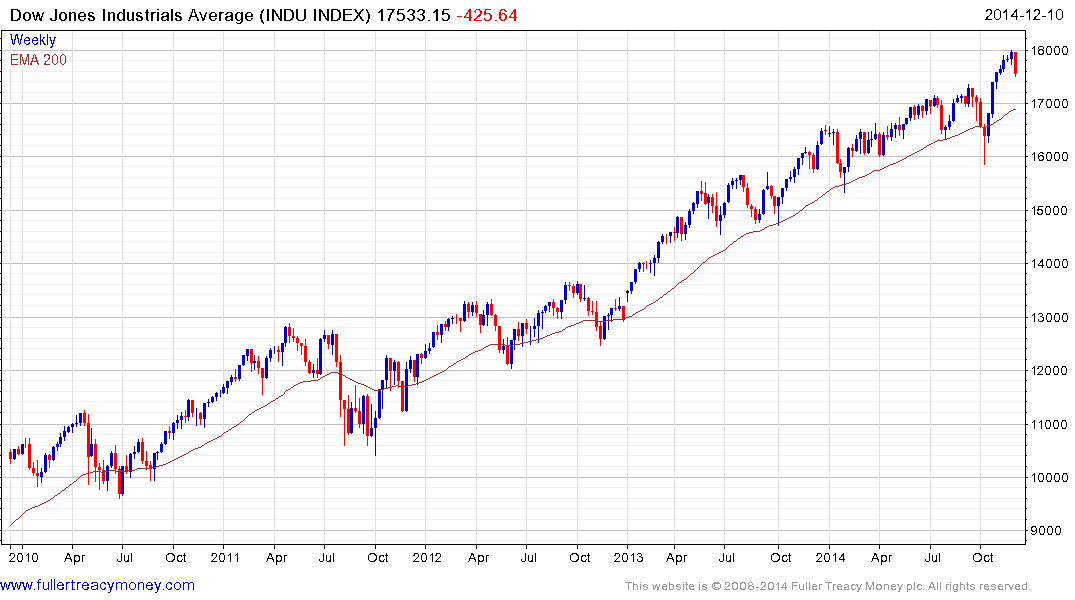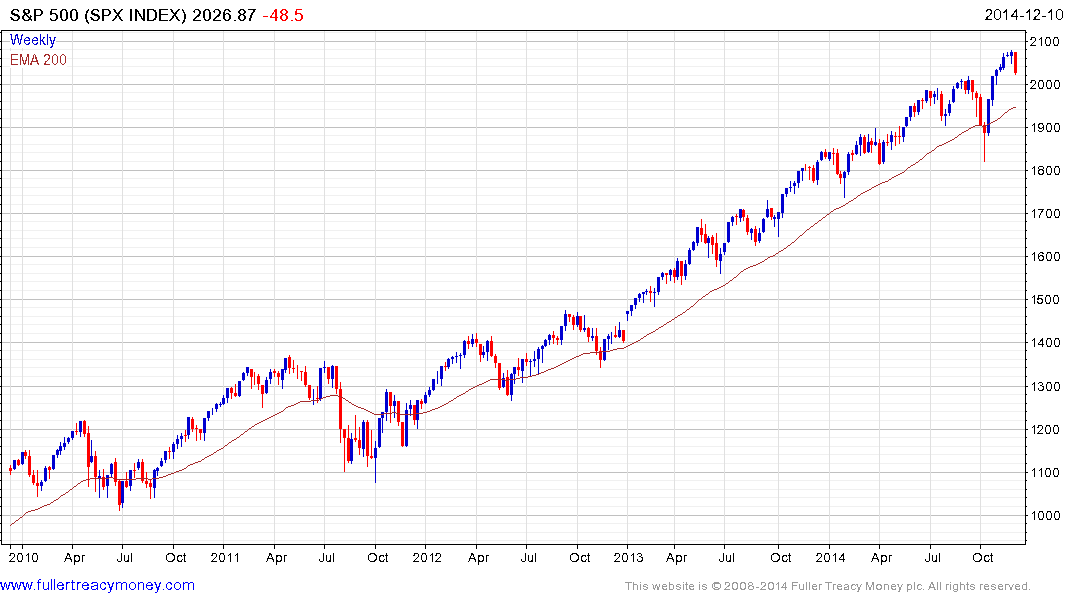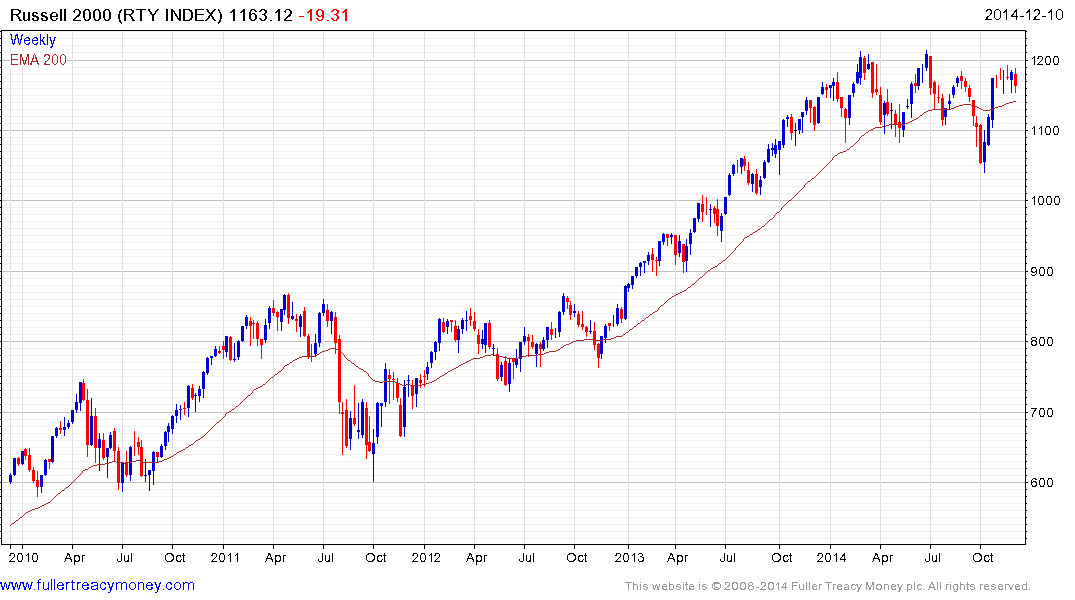Filling the tank before liftoff
Thanks to a subscriber for this report from Deutsche Bank. Here is a section on the USA:
The plunge in oil is concerning and is a net negative to S&P EPS, particularly for Energy, Industrials and Materials. We cut our 2014E EPS by $1 to $117.50 and our 2015E EPS by $5 to $121. We still expect 2015 EPS growth of ~3% as most macro data and company commentary do not suggest that global growth is careening. Europe is weak and hopes of improvement are policy dependent, but US growth remains healthy and consumption should stay strong on job gains and now cheaper oil. China and rest of EM is uncertain with what seems to be a controlled deceleration that isn't overly alarming, but is clearly weighing on commodities, materials and industrial goods' profits.
Our 2015E S&P EPS of $121 assumes 2015 avg. oil price of $65/$70 for WTI & Brent and euro doesn’t fall below $1.15. Every $5/bbl lower oil price lowers energy earnings by 10% and S&P EPS by ~$1, net of benefits elsewhere.
?Since the S&P 500 is more of an oil producer than user, the ~30% decline in Energy sector profits that we expect next year, assuming oil at $65-$70/bbl, is too much of a hit for benefits at other sectors to fully offset. If oil price average ~$80/bbl next year then S&P EPS is likely $3 higher, all else the same.
The S&P is global: 40% of total profits from abroad, 25% in foreign currencies S&P 500 companies are among the largest and most successful multinationals in the world. We estimate that a third of S&P revenue and 40% of its net profits are earned abroad. This has been the case for at least 5 years and compares to 15-20% in the mid 1990s and likely 10-15% in the mid 1980s.
Excluding Financials, Utilities and Telecom, slightly more than half of S&P profits are from abroad. While some foreign profits are earned in dollars, we estimate that roughly 25% of total S&P profits are earned in foreign currencies. Thus, we estimate that every 10% gain in the dollar vs. a trade weighted basket of currencies reduces S&P EPS by ~$2 or ~2% from FX translation.
Here is a link to the full report.
The above points relating to how the fall in oil prices and Dollar’s rally have the potential to impact the consolidated earnings of US companies are important. This is particularly true when the market has already been rallying for the last five years. When measured against the current short-term overbought condition on Wall Street potential for at least some consolidation and possibly mean reversion has increased.

The Nasdaq-100 was as overextended relative to the trend mean at the late November peak as at any time in the last couple of years, so potential for mean reversion has increased. The pick-up in the pace of the Index’s advance suggests investors have increasingly been willing to pay high prices for technology and biotech companies in particular but this does not detract from potential for mean reversion.

The Dow Jones Industrials Average rebounded emphatically from its October low but has also developed a short-term overbought condition and at least some consolidation of recent gains appears to be unfolding.

The S&P 500 has a similar pattern over the last year.

The Russell 2000 has been mostly rangebound for the last year. Yesterday’s upward dynamic was almost completely unwound today and suggests continued resistance in the region of 1200. A sustained move above 1200 would be required to confirm a return to medium-term demand dominance.
Back to top


